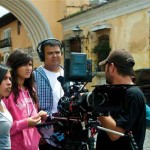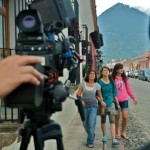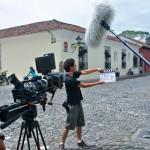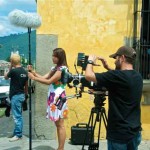Growing the Industry
photos by Laura McNamara
A Guatemalan film crew shares a universal story to highlight their country’s unique virtues in filmmaking.
This is a movie crew with a vision: Cru Código wants to train the spotlight on Guatemala, demonstrating to the international community that the “Country of Contrasts” is both a desirable and capable location for high-quality, professional filmmaking. “We are demonstrating that not only do we have an industry that is operating in Guatemala, but we have an industry that is growing,” says Edgar Pinzón, director of photography on the movie set of Sol. It’s the brainchild of Director Rafael Tres—a popular DJ who recently began devoting more time to revitalizing the Guatemalan film industry—he explains about the film: it recounts the story of a young chapina who struggles with her parents and her culture to realize her dream of becoming a professional soccer player. For Tres, this film could be the chance to attract international interest and support for Guatemalan films. Recalling movies such as Bend it like Beckham and She’s the Man, this story is not a novel narrative, nor is it meant to be one. “We don’t want to change the world, nor do we want to suggest that we want to become millionaires,” Tres said. “We just want to say: ‘Look at what we did.’ ”
Tres found that the best way to demonstrate that message was to produce a film with a universal plot and theme that connect with people from myriad backgrounds to prove Guatemala’s virtue in filmmaking. “It’s about how to tell the story and learning how to support the story,” Pinzón said. “We want to make a film that possesses a visual quality equal to that of films made at the highest level. We are filming in high-definition, thus the look of the film is a more professional look … We want the people to see the film and feel that this film, which was made here in Guatemala, could have been made anywhere in the world … so that the people can experience a Guatemalan film at a truly professional level.”
Codigo began filming in June, and Tres is aiming for an official release by 2010.
The film—portions of which were shot in La Antigua Guatemala—is also meant to showcase the benefits of filming in Guatemala. “The locations are very accessible; it’s easy to obtain permissions to film at most locations,” Pinzón said. “It’s not difficult like filming in other places. Furthermore, one can easily change environments here. It takes just minutes of driving to go from a hot, tropical seascape to the chilly atmosphere of mountain Highlands.”



